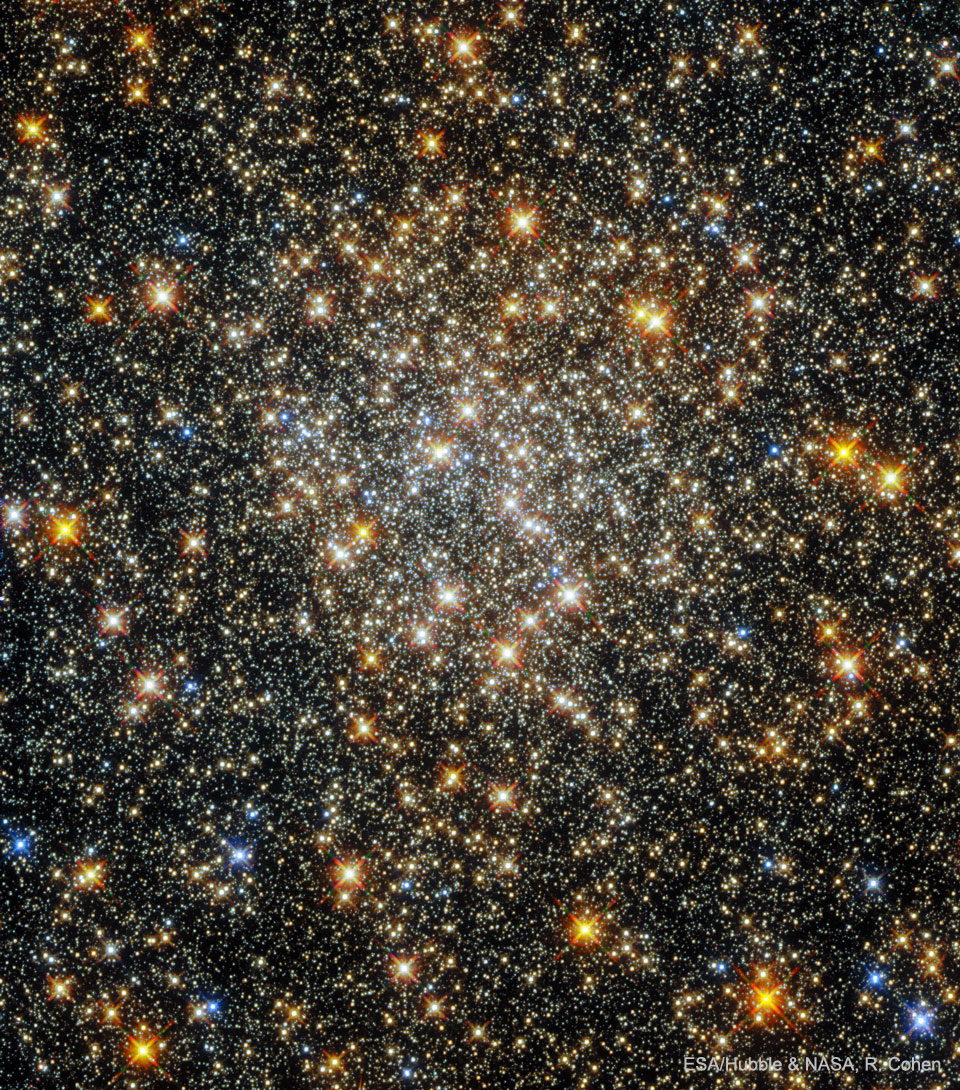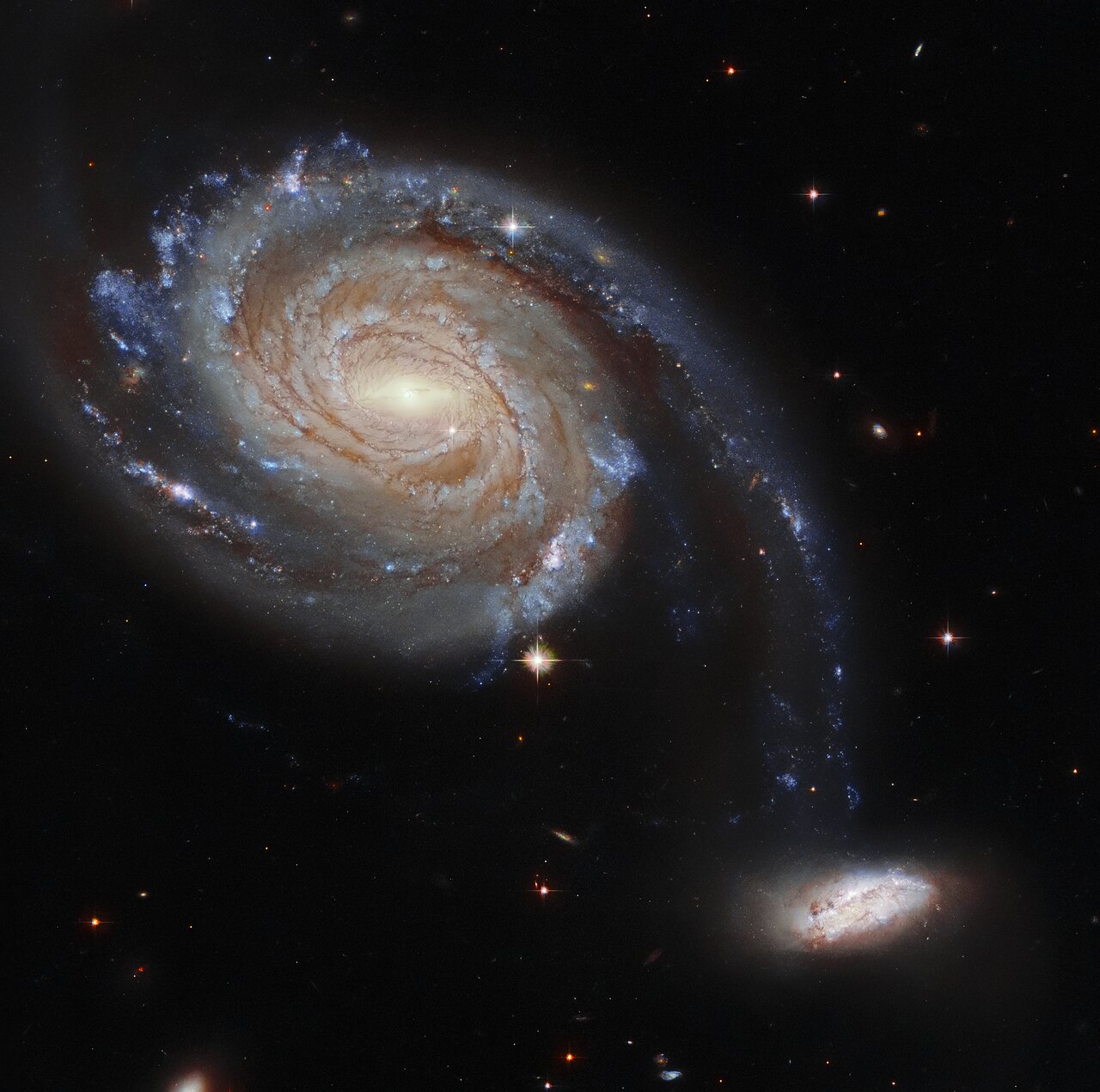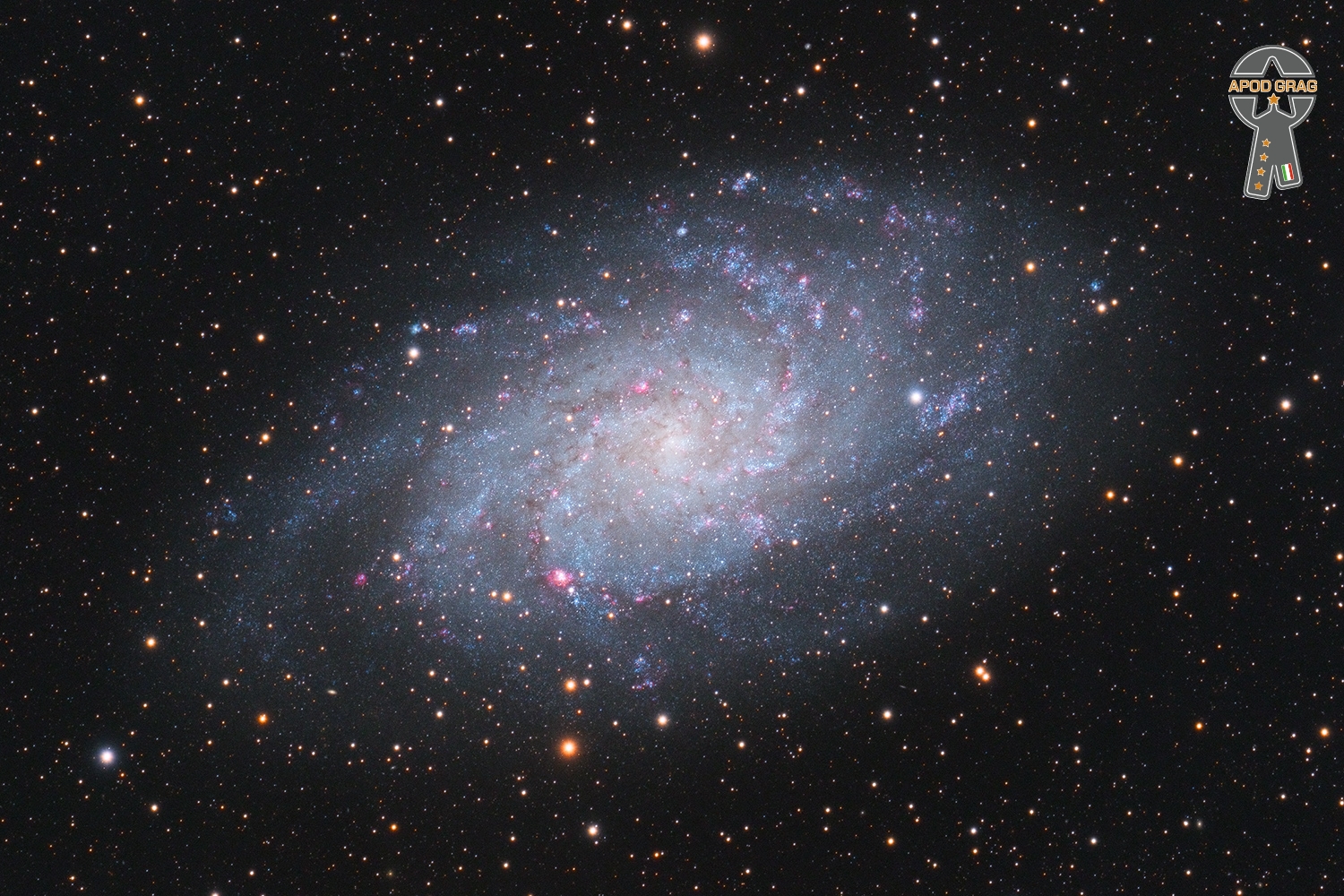Blog
Palomar 6 is one of about 200 globular clusters of stars that survive in our Milky Way Galaxy. These spherical star-balls are older than our Sun as well as older than most stars that orbit in our galaxy’s disk. Palomar 6 itself is estimated to be about 12.5 billion years old, so old that it is close to — and so constrains — the age of the entire universe. Containing about 500,000 stars, Palomar 6 lies about 25,000 light years away, but not very far from our galaxy’s center. At that distance, this sharp image from the Hubble Space Telescope spans about 15 light-years. After much study including images from Hubble, a leading origin hypothesis is that Palomar 6 was created — and survives today — in the central bulge of stars that surround the Milky Way’s center, not in the distant galactic halo where most other globular clusters are now found.

Peter Tosh, OM (born Winston Hubert McIntosh; 19 October 1944 – 11 September 1987) was a Jamaican reggae musician. Along with Bob Marley and Bunny Wailer, he was one of the core members of the band the Wailers (1963–1976), after which he established himself as a successful solo artist and a promoter of Rastafari. He was murdered in 1987 during a home invasion.
Tosh was born in Westmoreland, the westernmost parish of Jamaica. He was abandoned by his parents and “shuffled among relatives.” When McIntosh was fifteen, his aunt died and he moved to Trenchtown in Kingston, Jamaica. He first learned guitar after watching a man in the country play a song that captivated him. He watched the man play the same song for half a day, memorizing everything his fingers were doing. He then picked up the guitar and played the song back to the man. The man then asked McIntosh who had taught him to play; McIntosh told him that he had. During the early 1960s, as an aspiring musician, Tosh went to vocal teacher Joe Higgs, who gave free music lessons to young people. Through his contact with Higgs, Tosh met Robert Nesta Marley (Bob Marley) and Neville O’Reilly Livingston (Bunny Wailer). He then changed his name to Peter Tosh and the trio started singing together in 1962. Higgs taught the trio to harmonize and while developing their music, they would often play on the street corners of Trenchtown.
more...Masabumi Kikuchi (菊地 雅章, Kikuchi Masabumi, 19 October 1939 – 6 July 2015) was a Japanese jazz pianist and composer known for his unique playing style. He worked with many diverse musicians, including Sonny Rollins, Miles Davis, Mccoy Tyner, Elvin Jones, Gary Peacock and Paul Motian, and collaborated with Gil Evans and Tōru Takemitsu.
Masabumi Kikuchi was born in Tokyo in 1939. Following the firebombing of Tokyo in 1945, his family moved out of the city and settled in the rural Aizuwakamatsu, Fukushima prefecture, where his parents were born.
He studied music at the Tokyo Art College High School. While a student, he began buying second-hand records, most likely left behind by American soldiers. His early influences were Duke Ellington, Miles Davis and Thelonious Monk.[1] After graduating, he joined Lionel Hampton‘s Japanese touring band. He started a quintet with Terumasa Hino but soon after left for the US after winning a scholarship to study at Berklee College of Music.
He died from a subdural hematoma on 6 July 2015 at a hospital in Manhasset, New York. At the time of his death, he lived in Manhattan, New York City.
https://www.youtube.com/watch?v=SlR29FG2DcI
more...Willie Lee Perryman (October 19, 1911 – July 25, 1985), usually known professionally as Piano Red and later in life as Dr. Feelgood, was an American blues musician, the first to hit the pop music charts. He was a self-taught pianist who played in the barrelhouse blues style (a loud percussive type of blues piano suitable for noisy bars or taverns). His performing and recording careers emerged during the period of transition from completely segregated “race music” to rhythm and blues, which was marketed to both white and black audiences. Some music historians credit Perryman’s 1950 recording “Rocking With Red” for the popularization of the term rock and roll in Atlanta. His simple, hard-pounding left hand and his percussive right hand, coupled with his cheerful shout, brought him considerable success over three decades.
Perryman was born on a farm near Hampton, Georgia, United States, where his parents, Ada and Henry Perryman, were sharecroppers. He was part of a large family, though sources differ on exactly how many brothers and sisters he had. Perryman was an albino African American, as was his older brother Rufus, who also had a blues piano career as “Speckled Red“.
more...Farid al-Atrash (Arabic: فريد الأطرش; October 19, 1917 – December 26, 1974), also written Farid El-Atrache, was a Syrian-Egyptian composer, singer, virtuoso oud player, and actor. Having immigrated to Egypt at the age of only nine years old with his mother and siblings, he studied there under numerous respected musicians. Al-Atrash embarked on a highly successful career spanning more than four decades—recording 500 songs and starring in 31 movies. Sometimes referred to as “King of the Oud”, he is one of the most important figures of 20th- century Arab music.
Al-Atrash was born in Al-Qurayya, in southern Syria to the Druze princely al-Atrash family who fought the French colonial army. His father was Syrian and his mother was Lebanese.
As a young child, al-Atrash emigrated with his mother and siblings to Egypt, escaping the French occupation. Later, they were naturalized by the Egyptian government as citizens. Farid’s mother sang and played the Oud, which spurred his musical interest at an early age.
As a child and young adult, al-Atrash sang within school events. He studied at Egypt’s music conservatory and became an apprentice of the famous Egyptian composer Riad Al Sunbati. In the 1930s, al-Atrash began his professional singing career by working for privately owned Egyptian radio stations. Eventually, he was hired as an oud player for the national radio station and later as a singer. His sister, Asmahan, was also a talented singer, and for a while they worked together. In 1941, they starred in their first successful movie Intisar a l-Shabab (انتصار الشباب – The Triumph of Youth, 1941), in which Farid himself composed all the music.
more...Marcus Vinícius da Cruz e Mello Moraes (19 October 1913 – 9 July 1980), also known as Vinícius de Moraes (Portuguese pronunciation: [viˈnisjuʃ dʒi moˈɾajʃ]) and nicknamed O Poetinha (“The little poet”), was a Brazilian poet, lyricist, essayist, and playwright. Along with frequent collaborator Antônio Carlos Jobim, his lyrics and compositions were part of the birth of bossa nova music. He recorded several albums and also served as a diplomat.
Moraes was born in Gávea, a suburb of Rio de Janeiro, to Clodoaldo da Silva Pereira Moraes, a public servant, and Lidia Cruz, a housewife and amateur pianist. In 1916, his family moved to Botafogo, where he attended Afrânio Peixoto Primary School. In 1920, he gained entrance to a Masonic lodge through his maternal grandfather. Fleeing the 18 of the Copacabana Fort revolt, his parents moved to Governador Island while Moraes remained at his grandfather’s home in Botafogo to finish school. During visits with his parents on weekends and holidays, he became acquainted with the composer Bororo.
more...
This observation from the NASA/ESA Hubble Space Telescope showcases Arp 86, a peculiar pair of interacting galaxies which lies roughly 220 million light-years from Earth in the constellation Pegasus. Arp 86 is composed of the two galaxies NGC 7752 and NGC 7753 — NGC 7753 is the large spiral galaxy dominating this image, and NGC 7752 is its smaller companion. The diminutive companion galaxy almost appears to be attached to NGC 7753, and it is this peculiarity that has earned the designation “Arp 86” — signifying that the galaxy pair appears in the Atlas of Peculiar Galaxies compiled by the astronomer Halton Arp in 1966. The gravitational squabble between the two galaxies is doomed to end catastrophically for NGC 7752. It will eventually either be flung out into intergalactic space or be entirely engulfed by its far larger neighbour. Hubble observed Arp 86 as part of a larger effort to understand the connections between young stars and the clouds of cold gas in which they form. Hubble gazed into star clusters and clouds of gas and dust in a variety of environments dotted throughout nearby galaxies. Combined with measurements from ALMA, a gigantic radio telescope perched high in the Chilean Andes, these Hubble observations provide a treasure trove of data for astronomers working to understand how stars are born. These observations also helped sow the seeds of future research with an upcoming space telescope, the NASA/ESA James Webb Space Telescope (JWST). This telescope, due to launch later this year, will study star formation in dusty regions such as the galaxies of Arp 86.

Esperanza Emily Spalding (born October 18, 1984 Portland, OR) is an American jazz bassist, singer, songwriter, and composer. Her accolades include four Grammy Awards, a Boston Music Award, and a Soul Train Music Award.
A native of Portland, Oregon, Spalding began playing music professionally in her childhood, performing as a violinist in the Chamber Music Society of Oregon at age five. She was later both self-taught and trained on a number of instruments, including guitar and bass. Her proficiency earned her academic scholarships to Portland State University and the Berklee College of Music, both of which she attended, studying music.
Spalding released her first album, Junjo, in 2006 on the Spanish label Ayva Musica, after which she signed with the independent American label Heads Up, who released her 2007 self-titled album. Her third studio album, Chamber Music Society (2010), was a commercial success, charting at number 34 on the Billboard 200, and resulting in Spalding winning her first Grammy Award for Best New Artist; Spalding was the first jazz artist to win in this category. She saw further acclaim for her fourth release, Radio Music Society (2012), which earned the Grammy for Best Jazz Vocal Album, as well as the track “City of Roses” winning for Best Arrangement, Instrument and Vocals.
After spending the following several years performing as a supporting band player, Spalding released her fifth studio album, a funk rock-inspired concept album titled Emily’s D+Evolution, co-produced by Tony Visconti, on Concord Records. The following year, she released the album Exposure, which was limited to 7,777 copies. Her subsequent sixth studio record, 12 Little Spells, was released in 2019, and peaked at number one on Billboard’s Top Jazz Albums. The album also saw Spalding nominated for two Grammy Awards, winning in the Best Jazz Vocal Album category.
In addition to writing and performing music, Spalding has also worked as an instructor, first at the Berklee College of Music, beginning at age 20. In 2017, Spalding was appointed professor of the Practice of Music at Harvard University. In 2018, Spalding received an honorary doctorate of music from her alma mater, Berklee College of Music, and served as commencement speaker at the ceremony.
more...Wynton Learson Marsalis (born October 18, 1961 NOLA) is an American trumpeter, composer, teacher, and artistic director of Jazz at Lincoln Center. He has promoted classical and jazz music, often to young audiences. Marsalis has won at least nine Grammy Awards, and his Blood on the Fields was the first jazz composition to win the Pulitzer Prize for Music. He is the only musician to win a Grammy Award in jazz and classical during the same year.
Marsalis was born in New Orleans, Louisiana, on October 18, 1961, and grew up in the suburb of Kenner. He is the second of six sons born to Dolores Ferdinand Marsalis and Ellis Marsalis Jr., a pianist and music teacher. He was named for jazz pianist Wynton Kelly. Branford Marsalis is his older brother and Jason Marsalis and Delfeayo Marsalis are younger. All three are jazz musicians. While sitting at a table with trumpeters Al Hirt, Miles Davis, and Clark Terry, his father jokingly suggested that he might as well get Wynton a trumpet, too. Hirt volunteered to give him one, so at the age of six Marsalis received his first trumpet.
Although he owned a trumpet when he was six, he did not practice much until he was 12. He attended Benjamin Franklin High School and the New Orleans Center for Creative Arts. He studied classical music at school and jazz at home with his father. He played in funk bands and a marching band led by Danny Barker. He performed on trumpet publicly as the only black musician in the New Orleans Civic Orchestra. After winning a music contest at fourteen, he performed a trumpet concerto by Joseph Haydn with the New Orleans Philharmonic. Two years later he performed Brandenburg Concerto No. 2 in F Major by Bach. At seventeen, he was the youngest musician admitted to Tanglewood Music Center.
more...Charles Edward Anderson Berry (October 18, 1926 – March 18, 2017 St Louis, MO) was an American singer, songwriter and guitarist, and one of the pioneers of rock and roll music. Nicknamed the “Father of Rock and Roll“, he refined and developed rhythm and blues into the major elements that made rock and roll distinctive with songs such as “Maybellene” (1955), “Roll Over Beethoven” (1956), “Rock and Roll Music” (1957) and “Johnny B. Goode” (1958).Writing lyrics that focused on teen life and consumerism, and developing a music style that included guitar solos and showmanship, Berry was a major influence on subsequent rock music.
Born into a middle-class African-American family in St. Louis, Berry had an interest in music from an early age and gave his first public performance at Sumner High School. While still a high school student he was convicted of armed robbery and was sent to a reformatory, where he was held from 1944 to 1947. After his release, Berry settled into married life and worked at an automobile assembly plant. By early 1953, influenced by the guitar riffsand showmanship techniques of the blues musician T-Bone Walker, Berry began performing with the Johnnie Johnson Trio. His break came when he traveled to Chicago in May 1955 and met Muddy Waters, who suggested he contact Leonard Chess, of Chess Records. With Chess, he recorded “Maybellene”—Berry’s adaptation of the country song “Ida Red“—which sold over a million copies, reaching number one on Billboard magazine’s rhythm and blues chart.
By the end of the 1950s Berry was an established star, with several hit records and film appearances and a lucrative touring career. He had also established his own St. Louis nightclub, Berry’s Club Bandstand. He was sentenced to three years in prison in January 1962 for offenses under the Mann Act—he had transported a 14-year-old girl across state lines. After his release in 1963, Berry had several more successful songs, including “No Particular Place to Go“, “You Never Can Tell“, and “Nadine“. However, these did not achieve the same success or lasting impact of his 1950s songs, and by the 1970s he was more in demand as a nostalgic performer, playing his past material with local backup bands of variable quality. In 1972 he reached a new level of achievement when a rendition of “My Ding-a-Ling” became his only record to top the charts. His insistence on being paid in cash led in 1979 to a four-month jail sentence and community service, for tax evasion.
Berry was among the first musicians to be inducted into the Rock and Roll Hall of Fame on its opening in 1986; he was cited for having “laid the groundwork for not only a rock and roll sound but a rock and roll stance.” Berry is included in several of Rolling Stone magazine’s “greatest of all time” lists; he was ranked fifth on its 2004 and 2011 lists of the 100 Greatest Artists of All Time. The Rock and Roll Hall of Fame’s 500 Songs That Shaped Rock and Roll includes three of Berry’s: “Johnny B. Goode”, “Maybellene”, and “Rock and Roll Music”. Berry’s “Johnny B. Goode” is the only rock-and-roll song included on the Voyager Golden Record.
more...Ambrose Thibodeaux 10-18-1903 died 1995
Also known as Ambrose Sam, this Cajun accordion player was one of the leading exponents of Creole or la la music in the ’50s and ’60s, blowing out the doors in dancehalls throughout the St. Landry Parish of Louisiana. The appropriately titled Authentic French Acadian Music on the La Louisiane label collects many of his prime recordings. He continued performing well into his eighties and lives on as a musical presence in Cajun music in the form of his tunes, many of which are covered by artists such as Michael Doucet. The family itself is something of a musical dynasty. His brother, Herbert Sam Thibodeaux, was a sideman in his bands and Ambrose also played with his nephews in the Sam Brothers 5 band. Bassist Kenneth David is also a successful alumni of Thibodeaux’s groups.
more...https://www.youtube.com/watch?v=J7WnEixMEq0
more...The Triangulum Galaxy is a spiral galaxy 2.73 million light-years (ly) from Earth in the constellationTriangulum. It is catalogued as Messier 33 or NGC 598. The Triangulum Galaxy is the third-largest member of the Local Group of galaxies, behind the Andromeda Galaxy and the Milky Way. It is one of the most distant permanent objects that can be viewed with the naked eye.

David Nesta “Ziggy” Marley (born 17 October 1968) is a Jamaican musician and philanthropist. He is the son of reggae icon Bob Marley and Rita Marley. He led the family band Ziggy Marley and the Melody Makers, with whom he released eight studio albums. He has also released seven solo albums. Marley is an eight-time Grammy Award winner and a Daytime Emmy Award recipient.
In the earliest known record of his musical career, David Marley performed as part of a singing group called The Seven Do Bees, made up of him and his classmates, and wherein he was given the stage name “Freddie Dic”. The name never stuck, however, and instead, David went on to become known as “Ziggy”, a nickname often reported to have been given to him by his father Bob Marley, meaning “little spliff”. However, Ziggy stated the following to Melody Maker magazine in 1988: “Me name David but me big Bowie fan. So at the time of the Ziggy Stardust album, me call meself Ziggy and now everyone do.
more...More Posts
- Cosmos IC 2948
- Roger McGuinn
- Albert Ayler
- Pete Escovedo
- Leroy Vinnegar
- World Music Angelique Kidjo
- World Music Johnny Clarke
- Into the Woods by Theatre 55
- Cosmos Jones-Emberson 1
- Christine McVie
- Big John Patton
- Paul Gonsalves
- Will Bradley
- Flamenco Fridays Ezequiel Benítez y Paco León
- Daily Roots King Tubby
- Cosmos NGC 4725
- Thurston Harris
- Michael Rose
- Terry Garthwaite
- World Music Fred Soul & Zé Luis Nascimento
